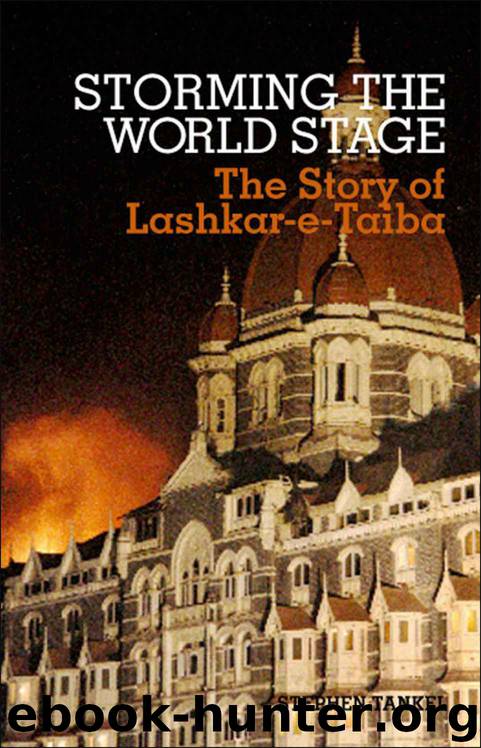Storming the World Stage: The Story of Lashkar-e-Taiba by Stephen Tankel

Author:Stephen Tankel [Tankel, Stephen]
Language: eng
Format: epub
Publisher: Oxford University Press
Published: 2011-07-12T00:00:00+00:00
Pakistan’s Gas Stove
Although Pakistan was clamping down on militancy, eliminating its proxy capability would rob the state of what some in the army and ISI perceived to be a necessary auxiliary force in the event of war with India, which they continued to view as an existential threat. Further, if the Musharraf regime completely discontinued the use of proxies, then it would be much more difficult for it to resume support for militancy in the event a political payoff from India did not materialize. Pakistan therefore sought to reduce militant activities, while keeping strategic assets like Lashkar intact and thus maintaining the option of increasing pressure if necessary. Interlocutors in both countries have likened this approach to an old gas stove: Pakistan could lower or raise the temperature, but if the pilot light was extinguished then the stove could not be turned back on automatically. The idea was no longer to bleed India via Kashmir, but simply to send a message that Pakistan was in control and could turn the temperature up or down, increasing or decreasing the flow of militants and tempo of operations. Lashkar was the predominant player on the Kashmiri pitch by this time. But the group’s mandate was to maintain a presence inside Indian-administered Kashmir through low-level attacks, nothing more.
To ensure its dictums were met, the security services threatened retribution against those militants who disobeyed the directive to reduce their militant activities in Indian-administered Kashmir. According to one Pakistani journalist who reported from Pakistan-administered Kashmir at the time, Lashkar cadres who infiltrated across the LoC without permission risked arrest upon their return as well as physical harm to themselves and their families.24 A member of the Pakistan Anti-Terrorism Force confirmed this based on his own interrogation of Lashkar cadres. Militants were told that if they did not toe the line as directed then when they returned from Indian-administered Kashmir they would find their families dead.25 Both interlocutors agreed the ISI put significant pressure on Lashkar’s leadership to keep its cadres in line as well. The ISI also put pressure on the guides and porters who helped militants to infiltrate.26 Coupled with the reduction in ceasefire violations, this made it harder to move weapons and supplies across the LoC to support fighters there. According to one Lashkar militant who had been the District Commander in Srinagar, the group was forced to rely more heavily on the support infrastructure it had built in Indian-administered Kashmir after 2005.27
Violent incidents dropped 16 per cent from 2005–2006, 34 per cent from 2006–2007 and 35 per cent from 2007–2008, according to the Indian Ministry of Home Affairs.28 Indian counter-insurgency efforts contributed to this decline, and by this time security forces were having significant success breaking up Lashkar’s cells and killing its cadres. The population’s appetite for conflict also remained low. Money was pumped into the region for reconstruction following the earthquake that occurred in 2005, further reducing the number of ready recruits or supporters of the ongoing insurgency. Many Kashmiris were already
Download
This site does not store any files on its server. We only index and link to content provided by other sites. Please contact the content providers to delete copyright contents if any and email us, we'll remove relevant links or contents immediately.
| Arms Control | Diplomacy |
| Security | Trades & Tariffs |
| Treaties | African |
| Asian | Australian & Oceanian |
| Canadian | Caribbean & Latin American |
| European | Middle Eastern |
| Russian & Former Soviet Union |
The Secret History by Donna Tartt(18851)
The Social Justice Warrior Handbook by Lisa De Pasquale(12143)
Thirteen Reasons Why by Jay Asher(8797)
This Is How You Lose Her by Junot Diaz(6796)
Weapons of Math Destruction by Cathy O'Neil(6147)
Zero to One by Peter Thiel(5689)
Beartown by Fredrik Backman(5600)
The Myth of the Strong Leader by Archie Brown(5427)
The Fire Next Time by James Baldwin(5250)
How Democracies Die by Steven Levitsky & Daniel Ziblatt(5129)
Promise Me, Dad by Joe Biden(5088)
Stone's Rules by Roger Stone(5027)
A Higher Loyalty: Truth, Lies, and Leadership by James Comey(4846)
100 Deadly Skills by Clint Emerson(4840)
Rise and Kill First by Ronen Bergman(4705)
Secrecy World by Jake Bernstein(4647)
The David Icke Guide to the Global Conspiracy (and how to end it) by David Icke(4628)
The Farm by Tom Rob Smith(4439)
The Doomsday Machine by Daniel Ellsberg(4417)
